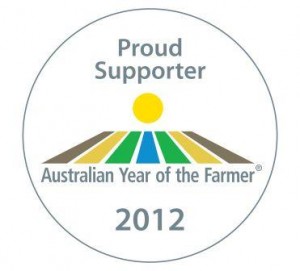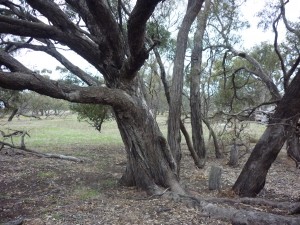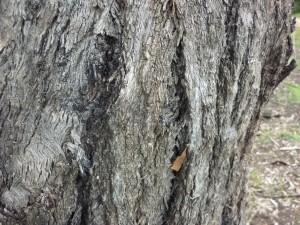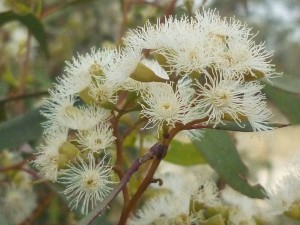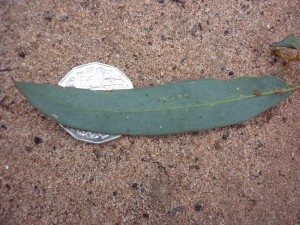Key Features of Black Boxes (Eucalyptus largiflorens)
Trees have many features, or parts, which help us to identify them, like:
Trunks
A Black Box tree may grow to about 20 metres in height – a small to medium sized tree. This takes a very long time – CSIRO has found that it may take 400 years to reach 10 m in height!
The trunks of the younger trees grow straight up. Mature Black Boxes have fairly large sturdy trunks before branching within a couple of metres above ground level.
Bark
A Black Box, has a rough, thick bark.
- 1 Do you think the width of some of the big cracks in the bark would be as wide as your thumb? (Use the leaf in the photo to help you work this out)
- 2 In what directions do the fibres of the bark go?
- 3 How would you describe the colour(s) of this bark?
(Click here for answers. )
Blossom
- 4What colour are the flowers? (This plant is actually pretty amazing as sometimes it has pink flowers too!)
5 What is the shape of the cup out of which the flowers come? - 6 Can you see where the nectar, that attracts the birds and insects, is held in the flower?
(Click here for answers. )
This is a tree which blossoms abundantly (many, many flowers) as the name E. largiflorens says.
Fruit
While flowers may only be seen for a short time, the fruit that follows will be there for much longer. The fruit holds the seeds in the cup of the gumnut. (Gumnuts is the common name for the fruit of a eucalyptus.) The fruit may be on the tree or fallen onto the ground.
There is a lot of variety in fruits, and each Eucalyptus has its own fruit size, shape, and colour. So, fruit are a key feature to work out what sort of Eucalyptus a tree is.
- 7 How would you describe the Black Box fruit for its:
- 8 Does the cap or the cup remain on the fruit?
(Click here for answers.)
The fruit of a Black Box tree holds its tiny seeds in four sunken ‘rooms’ or valves inside the cup. The photo shows what is left when these seeds have been released.
Leaves
Leaves are also used to identify a tree. There are many leaf shapes, sizes and shades of green! The veins on leaves also vary. These may change as the leaf grows.
- 9 How would you describe the Black Boxes leaf for:
- colour
- shape, including the tip
- size
- 10 What colour are the veins?
(Click here for answers.)
Further references for identifying Black Boxes from:
- Victorian DPI – description and needs
- Viridans- Black Box Woodland ecosystem
- CSIRO – water needs
- Mallee Native Plants Nursery – possible scientific name change
Return to main Black Box page or go onto “ph, salinity and the trees‘ which explores Black Boxes and other trees in the Lower Wimmera by photos, values and water quality in several places.
Page updated 15 Jan 2013
Supporter of
 and
and 